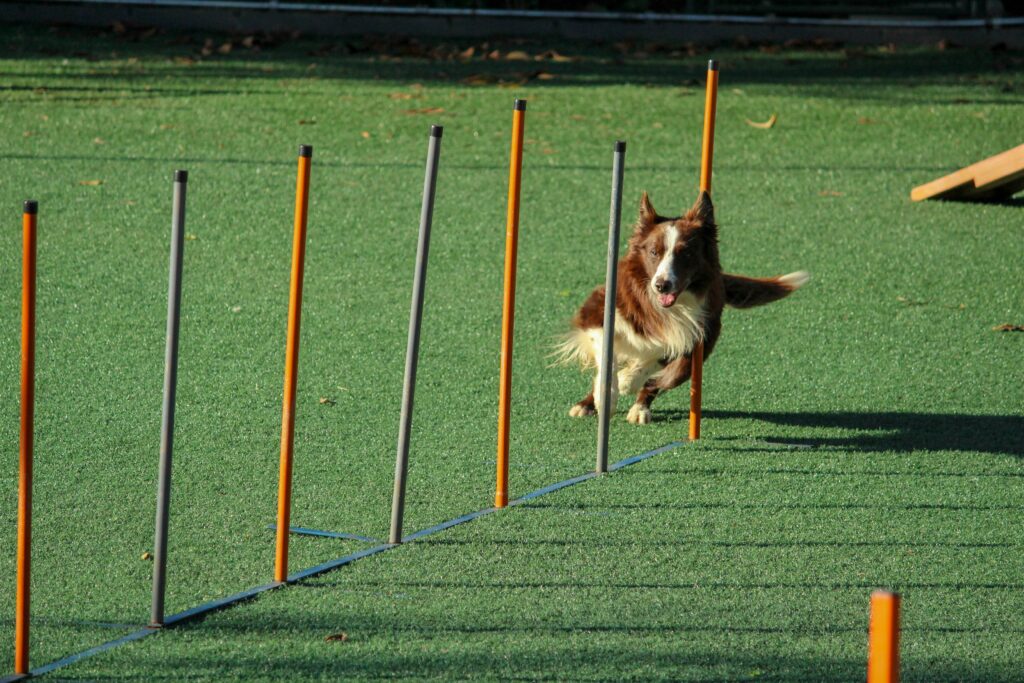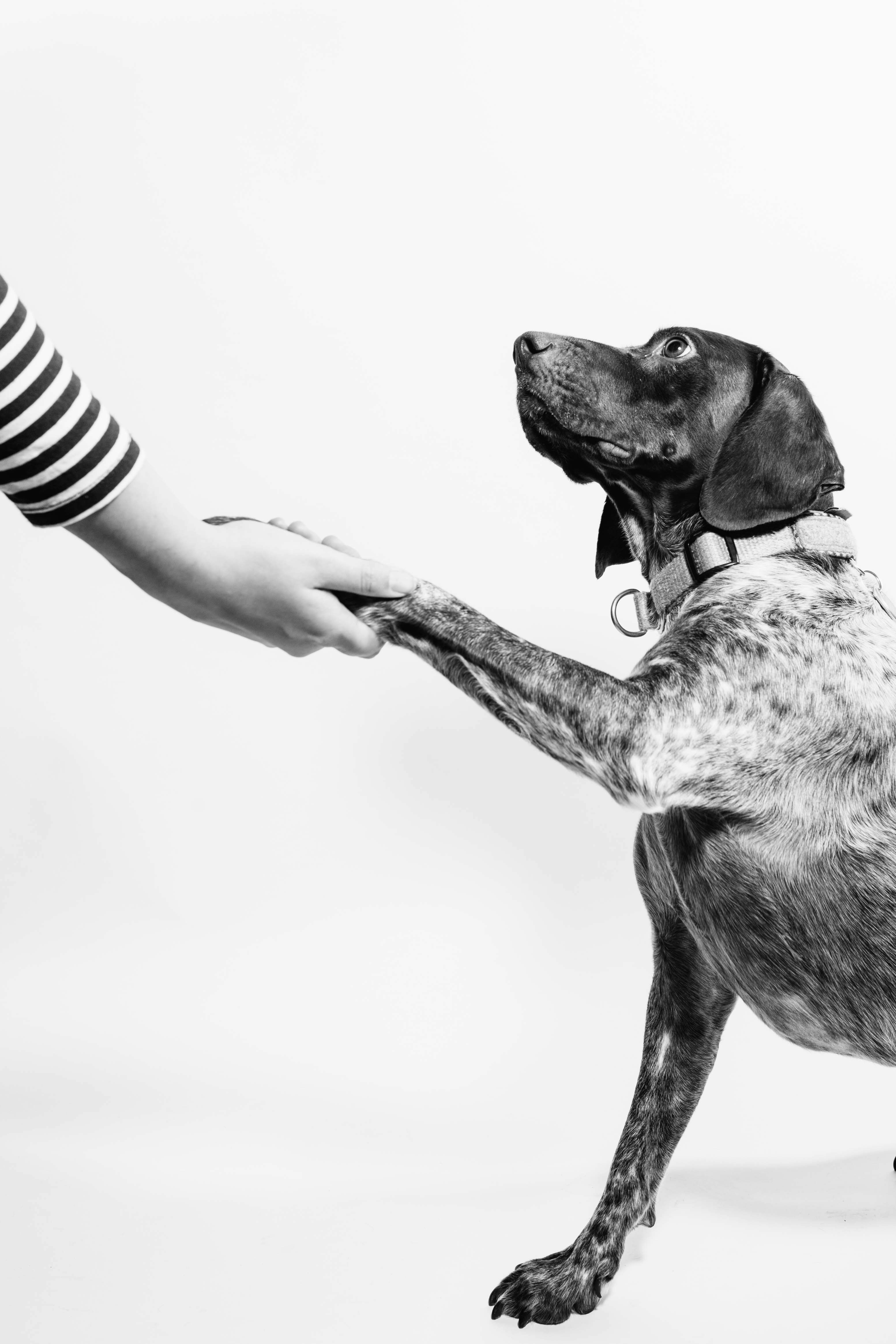
Have you ever wondered what goes on inside your furry friend’s head? Well, get ready for a fascinating dive into the science behind canine cognition! Understanding how dogs think and learn is key to effective dog training and strengthening your bond with your four-legged companion. LEARN MORE.
The Canine Brain: More Than Just Fur and Fluff
Your dog’s brain may not look like much compared to yours, but don’t let its size fool you! Inside that adorable noggin lies a complex network of neurons firing away, processing information, and driving behaviors. From dog training about basic instincts like chasing a ball to more advanced problem-solving skills, every action your dog takes is a result of intricate brain processes. LEARN MORE
Sensory Superstars: How Dogs Experience the World
Ever notice how your dog perks up at the sound of a treat bag rustling or sniffs out a hidden toy with ease? That’s because dogs have supercharged senses compared to humans. Their keen sense of smell, sharp hearing, and perceptive vision allow them to gather information about their environment in ways we can only imagine. Understanding how your dog perceives the world through these senses is crucial for effective communication and training. LEARN MORE
Learning and Memory: The Keys to Successful to Dog obedience classes
Just like humans, dogs are capable of learning and forming memories. From mastering basic commands like “sit” and “stay” to recalling past experiences, dogs have impressive cognitive abilities. But it’s not just about rote memorization—dogs also exhibit problem-solving skills and can learn through observation and imitation. By tapping into your dog’s natural learning capabilities, you can unlock their full potential and achieve remarkable results in training. LEARN MORE
Putting It All Together: Training Strategies That Work
Now that you have a better understanding of the science behind canine cognition, it’s time to put that knowledge into action! When training your dog, keep in mind their sensory abilities, learning preferences, and cognitive strengths. Use positive reinforcement techniques to reinforce desired behaviors and create a positive learning environment. And don’t forget to be patient and consistent—building new neural pathways takes time, but with dedication and practice, you and your dog can accomplish anything together! LEARN MORE

Unleash the Fun: Engaging Exercises for Your Pup
Ready to take your dog’s training to the next level? Get ready for a paw-some adventure as we explore fun and engaging exercises designed to stimulate your furry friend’s mental abilities. From brain-teasing games to interactive challenges, these activities will keep your dog entertained while enhancing their cognitive skills. LEARN MORE
Interactive Puzzle Toys: A Treat for the Mind
Who says puzzles are just for humans? Treat your dog to the joy of problem-solving with interactive puzzle toys. These clever contraptions hide treats or kibble inside, challenging your dog to use their smarts to figure out how to access the tasty rewards. Whether it’s sliding panels, spinning discs, or flipping lids, puzzle toys provide mental stimulation and entertainment for dogs of all ages and breeds. LEARN MORE
Hide and Seek: A Classic Game with a Canine Twist
Remember playing hide and seek as a kid? Well, dogs love it too! Hide and seek is a fantastic way to engage your dog’s senses and encourage them to use their natural instincts. Start by hiding behind furniture or in another room, then call your dog’s name and wait for them to find you. You can also hide treats or toys around the house and let your dog sniff them out—a fun and rewarding game for both of you! LEARN MORE
Training Games: Turning Learning into Playtime
Who says training has to be boring? Turn obedience exercises into exciting games that challenge your dog’s mind and keep them engaged. Try teaching your dog new tricks like “roll over” or “fetch,” using positive reinforcement and plenty of praise to encourage them along the way. You can also incorporate training games into your daily routine, such as practicing “stay” before mealtime or playing a game of “find it” with hidden treats. LEARN MORE
The Benefits of Mental Stimulation
Why bother with mental exercises for your dog? Well, besides being a whole lot of fun, mental stimulation is essential for your dog’s overall well-being. Just like humans, dogs thrive on mental challenges that keep their brains sharp and engaged. Engaging in regular mental exercises can help prevent boredom, reduce destructive behaviors, and even stave off cognitive decline in older dogs. Plus, it strengthens the bond between you and your furry friend as you work together towards a common goal. LEARN MORE

Keep Score: Tracking Your Dog’s Brain Training Progress
Curious about how brain training can improve your dog’s behavior? Let’s dive into how monitoring progress enhances overall behavior and strengthens your bond with your furry friend. LEARN MORE
Setting Goals: The Key to Success to Dog behavior training
Like any training program, setting clear goals is essential for tracking progress and measuring success. Start by identifying specific behaviors or skills you want to work on with your dog. Whether it’s mastering basic commands, reducing separation anxiety, or improving leash manners, having a clear objective in mind will help you stay focused and motivated throughout the training process.LEARN MORE
Tracking Techniques: From Notes to Numbers
Once you’ve established your goals, it’s time to start tracking your dog’s progress. There are several methods you can use, from keeping a training journal to using apps or online tools designed for tracking canine behavior. Note down your dog’s achievements, setbacks, and any changes in behavior you observe—this information will help you identify patterns, adjust your training approach as needed, and celebrate milestones along the way.LEARN MORE
Behavioral Changes: Signs of Success
As you continue with brain training exercises, keep an eye out for positive behavioral changes in your dog. Are they responding more quickly to commands? Showing less anxiety when left alone? Walking politely on leash without pulling? These are all signs that your training efforts are paying off and that your dog’s overall behavior is improving. Remember to praise and reward your pup for their progress—it’s important to reinforce the behaviors you want to see more of.LEARN MORE
Measuring Success: Beyond the Numbers
While tracking progress in terms of behavior changes and achievements is essential, don’t forget to consider the intangible benefits of brain training for your dog. Improved focus, increased confidence, and a stronger bond between you and your furry companion are all valuable outcomes of a successful training program. So, don’t be discouraged if progress seems slow at times—every small step forward is a win worth celebrating!LEARN MORE
Celebrating Milestones: Acknowledging Achievements
Finally, don’t forget to celebrate your dog’s achievements along the way. Whether it’s mastering a new trick, conquering a fear, or simply showing improvement in behavior, every milestone deserves recognition. Throw a mini party, give extra belly rubs, or shower your pup with their favorite treats—whatever makes them feel appreciated and loved. Celebrating successes not only reinforces positive behavior but also strengthens the bond between you and your furry friend.LEARN MORE

Making Brain Training a Daily Habit for Your Pup
Wondering how to fit brain training into your busy schedule? Discover simple yet effective ways to incorporate brain training exercises into your daily routine for lasting results and a happier, smarter dog.LEARN MORE
Start Small: Quick Training Sessions Throughout the Day
You don’t need hours of free time to train your dog’s brain—just a few minutes here and there can make a big difference. Break training sessions into short, 5-10 minute intervals and sprinkle them throughout your day. Whether it’s during commercial breaks, while waiting for dinner to cook, or before bedtime, find pockets of time to engage your pup in fun and interactive training activities. LEARN MORE
Multi-Tasking Made Easy: Brain Training During Daily Activities
Why not make everyday tasks more fun by turning them into brain training opportunities for your dog? Practice basic commands like “sit” or “stay” while preparing meals or doing household chores. Use mealtime as a chance to work on food puzzles or teach your dog new tricks. By integrating brain training into your daily activities, you’ll maximize your time together and keep your dog’s mind sharp.LEARN MORE
Mix It Up: Variety is the Spice of Life
Just like humans, dogs thrive on variety and stimulation. Keep your brain training sessions interesting by mixing up the activities and challenges you offer your dog. Try new games, introduce different types of puzzles, and vary the difficulty level to keep your pup engaged and motivated. Remember, the key is to make training enjoyable for both you and your furry friend, so don’t be afraid to get creative and have fun!LEARN MORE
Consistency is Key: Making Brain Training a Habit
While it’s important to keep training sessions fun and varied, consistency is also crucial for lasting results. Set a regular schedule for brain training sessions and stick to it as much as possible. Whether it’s every morning before breakfast or every evening after dinner, having a consistent routine will help reinforce learning and build good habits. Plus, your dog will come to expect and look forward to their daily mental workout! LEARN MORE
Make It a Team Effort: Getting the Whole Family Involved
Brain training shouldn’t be a solo endeavor—get the whole family involved for maximum fun and effectiveness. Assign different family members to lead training sessions or come up with new games and challenges together. Not only will this strengthen your bond with your dog, but it will also ensure that training remains a priority for everyone in the household. Plus, it’s a great way to spend quality time together as a family! LEARN MORE
In Conclusion: Brain Training for a Brighter, Happier Dog
In conclusion, incorporating brain training into your daily routine is easier than you think and offers numerous benefits for both you and your dog. By starting small, integrating training into daily activities, keeping things varied and fun, maintaining consistency, and involving the whole family, you can make brain training a natural and enjoyable part of your everyday life. So, what are you waiting for? Start training those brains and watch as your pup blossoms into a happier, smarter companion!
CLICK HERE to Elevate your Fur Baby’s IQ with this REVOLUTIONARY COURSE.

Click here to see more post from our WEBSITE.

